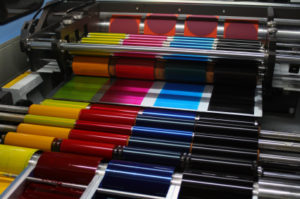How to Evaluate Print Quality
There is no point in taking elaborate photos and putting elegant texts if the outcome of your printed image is going to be bad. Determining the quality of a printed image is not hard, but it’s not so easy either. However, with the below points, you can become an expert at evaluating print quality.
1. Look Out for Colors
 The first and the most basic step to determine the quality of the print image is by evaluating the colors. Take your printed picture and compare it with the original. This original image can be in the computer, mobile or laptop, so before you jump to any conclusions regarding the quality of colors, check the resolution and colors of your desktop, laptop or mobile phone screen.
The first and the most basic step to determine the quality of the print image is by evaluating the colors. Take your printed picture and compare it with the original. This original image can be in the computer, mobile or laptop, so before you jump to any conclusions regarding the quality of colors, check the resolution and colors of your desktop, laptop or mobile phone screen.
Some screens have extremely warm colors while others have naturally washed out colors; thus the task of matching the colors becomes very tedious. What you can do is check the level of black, white, blue, yellow and red colors in the printed image, analyze the balance of all these colors, if yellow and red are in high range, the image will look warm and if blue and red are high, the image will be cooler with purplish touch. You need to make sure that your printer is printing an image with proper color balance.
2. Minor Details Matter
It was a few months ago, I started missing my dog at work so I decided to put his photo in the wallet. I quickly used my office printer to print his photo, but my boss saw me doing that. He was kind enough to allow me to put a large photo of my dog in the office. My dog has beautiful thick fur and for that reason, I decided to get his photo printed professionally, why? Well, that is because a quality printed image does not make comprises on printing minute details.
Every single strand of my dog’s fur is visible in my printed image with other astonishing small details. Printing small details are very important; it really makes the image to stand out. Make sure whenever you are evaluating print quality, look out for small details.
3. How sharp is the Printed Image?
 When Apple first introduced retina display screens and when Samsung introduced edge display, they claimed that their displays are now capable to produce a paper-like reading. A printed image, especially with texts, should have a good level of sharpness otherwise the texts look blur and distorted.
When Apple first introduced retina display screens and when Samsung introduced edge display, they claimed that their displays are now capable to produce a paper-like reading. A printed image, especially with texts, should have a good level of sharpness otherwise the texts look blur and distorted.
If you see blurry lines or “halo effect” on the objects and text of your printed photos, it means that the print outcome is not good. Take these points into consideration when you try to determine the print quality.
4. It Should Be Spot Free.
 If you see that there are grains, small pots, band, and streaks in your image, chances are that you are using a faulty printer to print images. Quality prints should not have these problems; the print should be fresh and clean as these factors can truly undermine the overall quality of your image. A picture is worth a thousand words, which is why it is important to always use a clean image to have printed.
If you see that there are grains, small pots, band, and streaks in your image, chances are that you are using a faulty printer to print images. Quality prints should not have these problems; the print should be fresh and clean as these factors can truly undermine the overall quality of your image. A picture is worth a thousand words, which is why it is important to always use a clean image to have printed.
